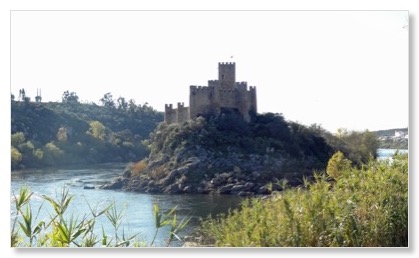The issue of climate change has become a key drive for water resources and hydrology in recent years. This has become an integral part of the expertise offered by WRA. As early as 1981, more than a decade before the formation of WRA, one of our principles, whilst working on a linear programming model of Libyan agriculture, was involved in discussion on whether to consider the greenhouse effect. At that time it was decided there was insufficient quantitative information to consider it in a meaningful way so it was taken no further. It did however provide an early indication of something which could be of relevance in the future.
In 1999 WRA carried out a study of climate change impact on the rivers Trent, Severn and Wye for Severn-Trent Water.
HYSIM had already been calibrated to all these rivers and the model was run with projected changes to temperature and precipitation provided by the Hadley centre. The temperature projections were used to calculate changes to potential evaporation (PET). This early study presented some of the problems which arose in later studies. Is it valid to assume that temperature is the only one of the four variable needed to calculate PET that will change? It was concluded it was valid. Firstly it is implicitly assumed in climate change projections that temperature and water vapour will increase ‘in step’ and relative humidity will remain constant. The other two parameters, wind speed and solar radiation, are relatively minor. Another problem which was tackled was that of downscaling, particularly problematic for precipitation which has greater spatial variability than temperature.
In 2002 WRA examined the impact of climate change on flood risk for a coastal power station at Immingham. It soon became apparent the major potential risk was from sea level increase and projected values of these were used to estimate the potential future flooding danger.
In 2009 two of our principles set up the web site
www.climatedata.info. This web site gives background on key aspects of climate change. It also demonstrates the ability of WRA to approach climate change studies in full awareness of the applicability and accuracy of climate projections and the data and models on which they are based.
The first WRA study of climate change outside of the UK was on the Yesilirmak basin in Turkey in 2009. The basin is heavily developed with many reservoirs. The monthly version of HYSIM was calibrated to the basin. The main finding of the study was that projected climate change is likely to increase winter runoff due to reduced snow fall in winter. A consequence of this is that flows at the start of the irrigation season will be lower and extra reservoir storage would be required to compensate.
In 2010 WRA worked for United Nations Food and Agriculture Organisation on the great lakes of Africa (Victoria, Tanganyika and Malawi). Lake surface temperature data were available but with gaps due to cloud cover. A method of infilling these data was developed. The complete lake surface temperature data were then used with observations of climate at lakeside stations and climate projections to estimate the likely change in lake temperatures.
In 2010 and 2011 WRA carried out two other projects in Africa examining the impact of climate change. The first of these was on tributaries of the Shire River in Malawi. Here it was found that a major impact was in the duration the drought season. In the case of the Kagera basin the conclusion was that the increase in precipitation would be larger than the increased evaporation due to rising temperature and that overall runoff would increase.
In 2012/13 climate change impact studies moved into two new geographical areas: Southern Europe and South East Asia. In Southern Europe a detailed study of the impact of climate change on the Tagus basin in Spain and Portugal was carried out. HYSIM was calibrated to 4 sub-basins in Spain and 11 in Portugal (the main focus of the study). The study used projections from 3 climate scenarios: A1B, A2 and B1.
 River Tajo, Almoural, Portugal
River Tajo, Almoural, Portugal The basin is heavily developed both in Spain and Portugal with 11 of the dams being larger than Kielder Reservoir (the largest in the UK). It was found that the impact of development had been larger in almost all sub-basins that that of projected climate change.
A pan European model-based assessment of the factors and processes controlling nitrogen export is being done. Models of flow and nutrient dynamics have been applied at sites across the current climate gradient of Europe from the arctic north to the Mediterranean. The outputs from General Circulation Models are being down-scaled for input to catchment scale water quality models. The results will then be compared across the different sites to provide a pan European assessment of the affects of climate change on nitrogen in rivers.
Footnote
Two Directors of WRA were co-authors of a paper examining downscaling methodology which is being adopted as a standard in the UK. This was tested on a catchment likely to suffer water stress and the impacts on flows and water quality were examined. (Integrated modelling of climate change impacts on water resources and quality in a lowland catchment: River Kennet, UK, R.J. Wilby, P.G. Whitehead, A.J. Wade, D Butterfield, R.J. Davis, G. Watts, Journal of Hydrology (2006) 330, 204-220.)
The
HYSIM rainfall runoff/model developed by
Ronald Manley of WRA has been used in a number of studies of climate change impact. These include:
Assessing The Impact Of Climate Change On Water Supply and Flood Hazard in Ireland Using Statistical Downscaling and Hydrological Modelling Techniques. Rosemary Charlton, Rowan Fealy, Sonja Moore, John Sweeney and Conor Murphy Climatic Change, Volume 74, Number 4, February 2006 , pp. 475-491(17)
High resolution climate change scenarios:
Implications for British runoff, Pilling, C. and Jones, J. A. A.: 1999, Hydrol. Process. 13, 2877–2895.
Prof Paul Whitehead has also undertaken an extensive INCA Flow and Water Quality Modelling study in the Ganges, Brahmaputra and Meghna River systems to investigate the impacts of climate change on river discharge, nitrate, ammonia and phosphorus into the future. This is the most complex INCA modelling study that has been attempted and results suggest increased monsoon flows and some reduced dry weather flows, or with extended drought periods. Plus nutrient concentrations would fall due to the extra dilution effects in monsoon periods. The effects of socio-economic change has also been investigated to evaluate the Ganges clean-up plan and to study the impacts of proposed water transfers upstream of Bangladesh. The clean-up plan if implemented would improve the water quality reducing nutrient loads entering Bangladesh. The water transfers would have a major effect, if implemented in full, significantly reducing flows into the delta system and the Bay of Bengal.
Download the PresentationRead the Published Papers:
Impacts of climate change and socio-economic scenarios on flow and water quality of the Ganges, Brahmaputra and Meghna (GBM) river systems: low flow and flood statistics. P. G. Whitehead et al. Dynamic modeling of the Ganga river system: impacts of future climate and socio-economic change on flows and nitrogen fluxes in India and Bangladesh, P. G. Whitehead et al.


